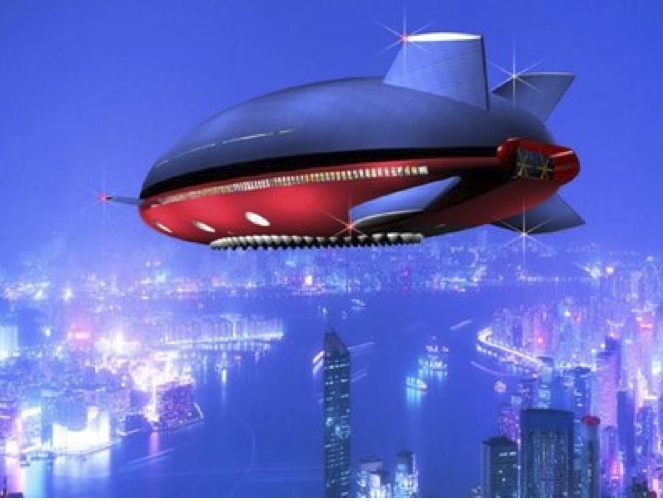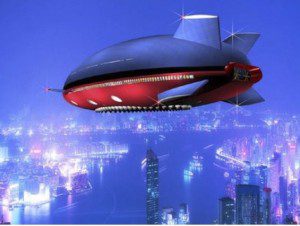
27 Apr EARTH MATTERS: FLYING MACHINES
Editor’s note: Scientist/writer and part-time Telluride local Billy Mason is also a pilot. This week he takes a time out from his focus on the health of our planet – well, sort of – to talk about the latest and greatest in flying machines. A departure for sure – although “carbon footprint” remains his middle name.
 Look up in the sky! It’s a bird. It’s a plane, It’s an airship?
Look up in the sky! It’s a bird. It’s a plane, It’s an airship?
Moving across the heavens at far less than the speed of light and far safer then the Hindenburg that tragically burst into flames in 1937, the modern-day airship potentially represents the future of air cargo and sightseeing flights. Diverging slightly from my bi-monthly discussions of issues related to Earth science, I am going to take off and soar into my past.
In my youth I had the privilege to earn a living as a professional pilot. Although in the field of aviation my career was insignificant, I lived and breathed to step into the cockpit and view the Earth from the best seat in town. However, over time the magic of aviation dissipated like a wispy fog on a sunny morning. The romantic allure of powered flight was corrupted by my increasing awareness that the carbon footprint of air travel is higher than any other form of transportation. In comparison to the relatively fuel-efficient car, air travel emits more greenhouse gases that cause global warming. On top of that, if you car-pool, the carbon footprint per individual decreases significantly. For example, flying from Boston to San Francisco generates approximately 1,300 kilograms of greenhouse gases per passenger whereas a car with four passengers would generate approximately 232 kilograms of greenhouse gases per passenger. The amount of greenhouse gas emissions further decreases if you use public transportation such as a bus or train.
Cargo Airships
As a consequence of scientific research identifying the need to develop technologies and practices to reduce human-induced greenhouse gases and an increase in fuel costs, there has been a resurgence of interest in the use of airships 75 years after the industry fell to the Earth in a catastrophic fireball. Thinking outside the box of an aviation industry that has been on a holding pattern for decades, a new group of entrepreneurs envisions a future in which modern airships will carry cargo to remote locations. Unlike the Hindenburg, these modern-day variations on the theme are a hybrid of lighter-than-air and fixed-wing aircraft. They use helium instead of flammable hydrogen to keep the airship aloft, thus eliminating the dangers of the past. They also use small, low fuel use engines such as a four cylinder Lycoming 0-320 typically found on a four passenger Cessna 172 fixed wing aircraft. Therefore, the modern airship is capable of carrying enormous payloads at a fraction of the cost of our current cargo aircraft.
Furthermore, today’s airboats do not require fixed base airports, and consequently are able to deliver their cargo directly to any remote location without the need for costly infrastructure and ground transportation. Thus, the elimination of truck transport and associated roadways reduces the amount of greenhouse gases generated by traditional cargo transport.
Lockheed has an airship under development scheduled to be commercially available by late 2013. SkyTug has a 20-ton payload capacity with a range of 1,000 nautical miles. Hinging upon its success. Lockheed plans to build a larger version, dubbed Skyfreighter, in late 2014, which could transport a 50-ton payload.
Potential markets for these cargo airships are the frozen tundra of northern Canada, western China, and other remote parts of the world. According to Peter DeRobertis, project leader for commercial hybrid air vehicles at Lockheed Martin’s Aeronautics and Skunk Works division, modern airships “give you access and much lower cost” and “it’s also a green aircraft; you’re not polluting.”
Sightseeing Airships
In addition to cargo transport, modern airships can effectively replace fixed-wing aircraft and helicopters for sightseeing tours.
Instead of buzzing around the Grand Canyon or the islands of Hawaii in noisy, vibrating helicopters, sightseeing passengers could be floating silently through the clouds. Instead of passengers being packed into seats like sardines leaning on each other to peer out the windows, they could be sitting in a soft comfortable chair at a table enjoying an exquisite gourmet meal and glass of wine while they gaze at a panoramic view from large windows. Imagine being able to casually carry on a civil conservation without wearing bulky headsets and having your stomach vibrated to nausea. The use of airships for sightseeing also eliminates noise pollution for people on the ground who typically do not appreciate the tranquility of the natural environment they are visiting being disrupted by annoying helicopters that sound like really loud mosquitoes.
In the 1990s, a modern 12-passenger version of the “Zeppelin” was resurrected by the German company Zeppelin Luftschifftechnik GmbH in Friedrichshafen for the air tour industry. It currently operates in Germany, England, California, and elsewhere. The initial funding for the development and construction of the Zeppelin NT was, interestingly, provided by money left over from the original Zeppelin company founded by Ferdinand von Zeppelin in 1908.
I applaud the new group of entrepreneurs who “think outside the box” and facilitate symbiotic relationships among society, economy, and environment. I also look forward to cruising above the Rocky Mountains or the islands of Hawaii with a birds-eye view of the Earth and a clean conscience while I enjoy a fine meal and the company of my friends.
Care to join me?


Sorry, the comment form is closed at this time.